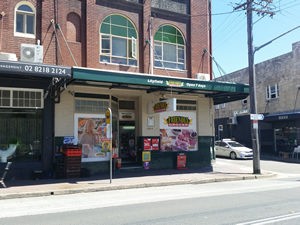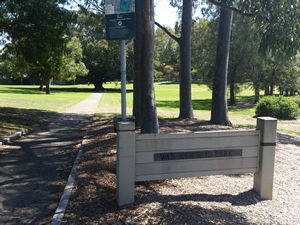Are you looking for help with pest control in Lilyfield? You’ve come to the right place! We control annoying pests such as termites (white-ants), ants, and all types of cockroaches. The vermin infesting in this suburb is normally due to high temperatures, leafy gardens and higher than average rainfall rates in Sydney.
Area Information:
Lilyfield is a suburb in the Inner West of Sydney located in NSW Australia. Located 6 kms west of the Sydney CBD. It’s close proximity to the CBD has resulted in rapid gentrification of the area with cottages undergoing renovation and development. Much like its neighboring suburbs, its population comes from a wide range of diverse cultural and ethnic backgrounds.
It is a dense and highly populated area. This attracts vermin and cockroaches which are highly prolific at this time of year. Many houses are older styled Victorian terraced houses which have sub-floors making an excellent refuge for many pests. Roof cavities also make the perfect home for possums and other invasive rodents which can quickly over run your property.

It borders the suburbs of Leichhardt, Rozelle and Annandale and is bounded to the west by Iron Cove. Although mainly middle class, the suburb still retains a vast population of working-class roots and like its neighbouring suburbs, and is home to a variety of ethnic cultures.
Looking for pest control Inner West?
Pest Control Lilyfield: Protecting Heritage and Landmarks from Unwanted Intruders
Lilyfield, a charming suburb located in the Inner West of Sydney, Australia, is renowned for its rich heritage, picturesque landscapes, and vibrant community. As with any urban area, the residents of Lilyfield face challenges related to pest infestations, which can threaten both the historical landmarks and the daily lives of its inhabitants.
The importance of effective pest control in preserving Lilyfield’s heritage and landmarks while maintaining a healthy and safe environment for its residents.
The Heritage of Lilyfield
Lilyfield boasts a significant historical background, with various heritage-listed sites scattered throughout the suburb. The Callan Park Hospital for the Insane, established in the 19th century, is one such landmark that holds immense cultural value. Additionally, the Iron Cove Bridge, a prominent infrastructure marvel, connects Lilyfield to nearby suburbs and is an integral part of the area’s history. The preservation of these landmarks relies heavily on proactive pest control measures.
The Impact of Pests on Heritage
Pests, such as termites, rodents, and cockroaches, can wreak havoc on historical buildings and structures. The wooden beams and foundations that form the backbone of heritage-listed buildings are particularly vulnerable to termite infestations. These tiny, voracious insects can silently feed on the wood, causing structural damage that may remain unnoticed until it’s too late.
Similarly, rodents can gnaw through electrical wires and insulation, posing fire hazards and damaging historical artifacts. Cockroaches, besides being carriers of diseases, can leave unsightly stains and odors, further degrading the appearance of historical sites.
It is crucial to implement effective pest control measures in Lilyfield’s heritage sites to ensure the preservation of these landmarks for future generations to appreciate.
Integrated Pest Management (IPM) in Lilyfield
To protect Lilyfield’s heritage and landmarks effectively, an Integrated Pest Management (IPM) approach is indispensable. IPM is a holistic and environmentally friendly pest control strategy that integrates various methods to manage pests with minimal impact on non-target organisms and the surrounding ecosystem.
1. Inspection and Monitoring:
The first step in IPM is conducting thorough inspections of the heritage sites and their surroundings. Trained pest control professionals assess the vulnerability of the buildings to pest infestations and identify the specific pest species present. Advanced monitoring techniques, such as pheromone traps and electronic sensors, help track pest activity and population levels.
2. Preventive Measures:
Preventing pests from entering heritage buildings is vital. This can be achieved by sealing cracks and gaps in walls, roofs, and foundations.
Installing insect screens to windows and using weather-stripping on doors help keep pests out. Implementing strict sanitation practices minimizes food sources for pests, thereby discouraging infestations.
3. Physical Controls:
Utilizing physical barriers and traps can effectively manage pest populations. For example, bait stations can be strategically placed to lure and eliminate termites.
Rat and mouse traps can be employed to control rodent populations. The use of these non-toxic methods reduces the risk of harmful chemicals harming the heritage structures.
4. Biological Controls:
Biological control involves introducing natural predators of pests to regulate their populations. This technique can be applied in a targeted and safe manner, minimizing harm to the environment. For instance, certain nematodes can be introduced to the soil to control termite colonies.
5. Low Toxic Controls:
While insecticidalcontrol is generally a last resort due to its potential environmental impact, it may be necessary in severe infestations. However, the selection and application of chemicals must be carefully regulated to minimize harm to non-target organisms and human health.
Landmarks and Pest Control Lilyfield
1. Callan Park Hospital for the Insane:
Callan Park Hospital’s historical significance makes it imperative to safeguard it from pest infestations. Regular inspections of its wooden structures can detect termite activity at an early stage. Implementation of preventive measures, such as sealing gaps and applying protective coatings, can create an inhospitable environment for pests. The use of termite-resistant timber during restoration efforts can also contribute to long-term protection.
2. Iron Cove Bridge:
As a vital transport link in Lilyfield, the Iron Cove Bridge must be protected from potential rodent infestations. Regular monitoring of the bridge’s surrounding areas can help identify pest activity. Physical measures, such as installing barriers and traps, can prevent rodents from damaging electrical components and posing safety risks.
Preserving the heritage and landmarks of Lilyfield necessitates a proactive and environmentally conscious approach to pest control.
By implementing Integrated Pest Management techniques, such as inspection, monitoring, preventive measures, physical and biological controls, and, if necessary, carefully regulated chemical controls, the suburb can effectively protect its historical sites from pest infestations.
As Lilyfield continues to thrive as a culturally rich and diverse community, safeguarding its heritage from unwanted intruders is a shared responsibility that ensures these landmarks endure for generations to come.
We also work in the Baulkham Hills and Hills District areas.

